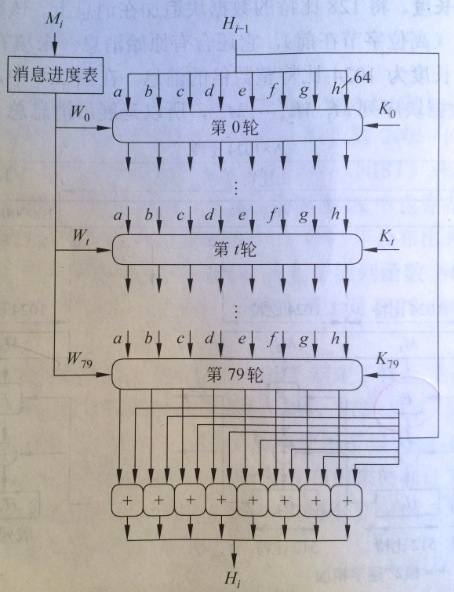解决智能调度问题可以利用Google的OR-Tools库来实现。以下是一个详细的解决思路及解决方案:
一、定义问题
货物信息:包括重量、体积、提货坐标位置、提货时间范围、送货坐标位置、送货时间范围。
车辆信息:包括载重、车厢容积、每公里费用。
目标:最小化总成本,同时满足所有约束条件。
二、建模
使用VRP(Vehicle Routing Problem)模型,扩展为带时间窗的VRP(VRPTW)。
定义决策变量:每个货物由哪辆车运输,以及运输顺序。
定义约束条件:车辆载重和容积限制、时间窗限制、路径长度限制等。
定义目标函数:最小化总成本。
三、求解
使用OR-Tools中的路由库(Routing Library)来求解问题。
设置初始解和搜索策略,以提高求解效率。
四、解决方案
1. 导入必要的库
python">from ortools.constraint_solver import routing_enums_pb2
from ortools.constraint_solver import pywrapcp
import math
2. 定义数据结构
python">class Cargo:def __init__(self, weight, volume, pickup_location, pickup_time_window, delivery_location, delivery_time_window):self.weight = weightself.volume = volumeself.pickup_location = pickup_locationself.pickup_time_window = pickup_time_windowself.delivery_location = delivery_locationself.delivery_time_window = delivery_time_windowclass Vehicle:def __init__(self, capacity_weight, capacity_volume, cost_per_km):self.capacity_weight = capacity_weightself.capacity_volume = capacity_volumeself.cost_per_km = cost_per_km
3. 计算距离和时间
python">def distance(location1, location2):# 假设location是一个(x, y)坐标x1, y1 = location1x2, y2 = location2return math.sqrt((x1 - x2) ** 2 + (y1 - y2) ** 2)def time_to_travel(distance, speed=1.0):# 假设速度为1.0单位距离/单位时间return distance / speed
4. 创建数据模型
python">def create_data_model():data = {}data['cargo'] = [Cargo(10, 2, (0, 0), (0, 10), (1, 1), (10, 20)),Cargo(20, 3, (2, 2), (5, 15), (3, 3), (15, 25)),# 添加更多货物信息]data['vehicles'] = [Vehicle(50, 10, 1.0),Vehicle(30, 8, 1.2),# 添加更多车辆信息]data['distance_matrix'] = []for i in range(len(data['cargo']) + 1):row = []for j in range(len(data['cargo']) + 1):if i == 0:loc1 = (0, 0) # 假设起点为(0, 0)else:loc1 = data['cargo'][i-1].pickup_locationif j == 0:loc2 = (0, 0) # 假设起点为(0, 0)else:loc2 = data['cargo'][j-1].pickup_locationrow.append(distance(loc1, loc2))data['distance_matrix'].append(row)return data
5. 创建路由模型
python">def create_routing_model(data):manager = pywrapcp.RoutingIndexManager(len(data['distance_matrix']), len(data['vehicles']), 0)routing = pywrapcp.RoutingModel(manager)def distance_callback(from_index, to_index):from_node = manager.IndexToNode(from_index)to_node = manager.IndexToNode(to_index)return data['distance_matrix'][from_node][to_node]transit_callback_index = routing.RegisterTransitCallback(distance_callback)routing.SetArcCostEvaluatorOfAllVehicles(transit_callback_index)def demand_callback(index):node = manager.IndexToNode(index)if node == 0:return 0return data['cargo'][node-1].weightdemand_callback_index = routing.RegisterUnaryTransitCallback(demand_callback)routing.AddDimensionWithVehicleCapacity(demand_callback_index,0, # 车辆容量下限[v.capacity_weight for v in data['vehicles']], # 每辆车的容量True, # 是否强制从0开始'Capacity')def time_callback(from_index, to_index):from_node = manager.IndexToNode(from_index)to_node = manager.IndexToNode(to_index)if from_node == 0:loc1 = (0, 0)else:loc1 = data['cargo'][from_node-1].pickup_locationif to_node == 0:loc2 = (0, 0)else:loc2 = data['cargo'][to_node-1].pickup_locationtravel_time = time_to_travel(distance(loc1, loc2))if to_node == 0:return travel_timereturn travel_time + data['cargo'][to_node-1].pickup_time_window[0]time_callback_index = routing.RegisterTransitCallback(time_callback)routing.AddDimension(time_callback_index,0, # 允许的最大等待时间3000, # 最大时间窗口False, # 不强制从0开始'Time')time_dimension = routing.GetDimensionOrDie('Time')for location_idx, cargo in enumerate(data['cargo']):index = manager.NodeToIndex(location_idx + 1)time_dimension.CumulVar(index).SetRange(cargo.pickup_time_window[0], cargo.pickup_time_window[1])for vehicle_id in range(len(data['vehicles'])):index = routing.Start(vehicle_id)time_dimension.CumulVar(index).SetRange(data['vehicles'][vehicle_id].pickup_time_window[0], data['vehicles'][vehicle_id].pickup_time_window[1])for i in range(len(data['vehicles'])):routing.AddVariableMinimizedByFinalizer(time_dimension.CumulVar(routing.Start(i)))routing.AddVariableMinimizedByFinalizer(time_dimension.CumulVar(routing.End(i)))return routing, manager
6. 求解并输出结果
python">def solve_and_print_solution(data, routing, manager):search_parameters = pywrapcp.DefaultRoutingSearchParameters()search_parameters.first_solution_strategy = (routing_enums_pb2.FirstSolutionStrategy.PATH_CHEAPEST_ARC)solution = routing.SolveWithParameters(search_parameters)if solution:total_distance = 0total_cost = 0for vehicle_id in range(len(data['vehicles'])):index = routing.Start(vehicle_id)plan_output = f'Route for vehicle {vehicle_id}:\n'route_distance = 0while not routing.IsEnd(index):plan_output += f' {manager.IndexToNode(index)} -> 'previous_index = indexindex = solution.Value(routing.NextVar(index))route_distance += routing.GetArcCostForVehicle(previous_index, index, vehicle_id)plan_output += f' {manager.IndexToNode(index)}\n'plan_output += f'Distance of the route: {route_distance}m\n'print(plan_output)total_distance += route_distancetotal_cost += route_distance * data['vehicles'][vehicle_id].cost_per_kmprint(f'Total Distance of all routes: {total_distance}m')print(f'Total Cost of all routes: {total_cost}')else:print('No solution found.')
7. 主函数
python">def main():data = create_data_model()routing, manager = create_routing_model(data)solve_and_print_solution(data, routing, manager)if __name__ == '__main__':main()五、总结
以上代码展示了如何使用Google OR-Tools解决带时间窗的车辆路径问题(VRPTW)。通过定义货物和车辆的信息,计算距离和时间,创建路由模型,并求解最优路径,最终输出满足要求的最低成本方案。可以根据实际需求调整数据模型和参数,以适应不同的应用场景。




